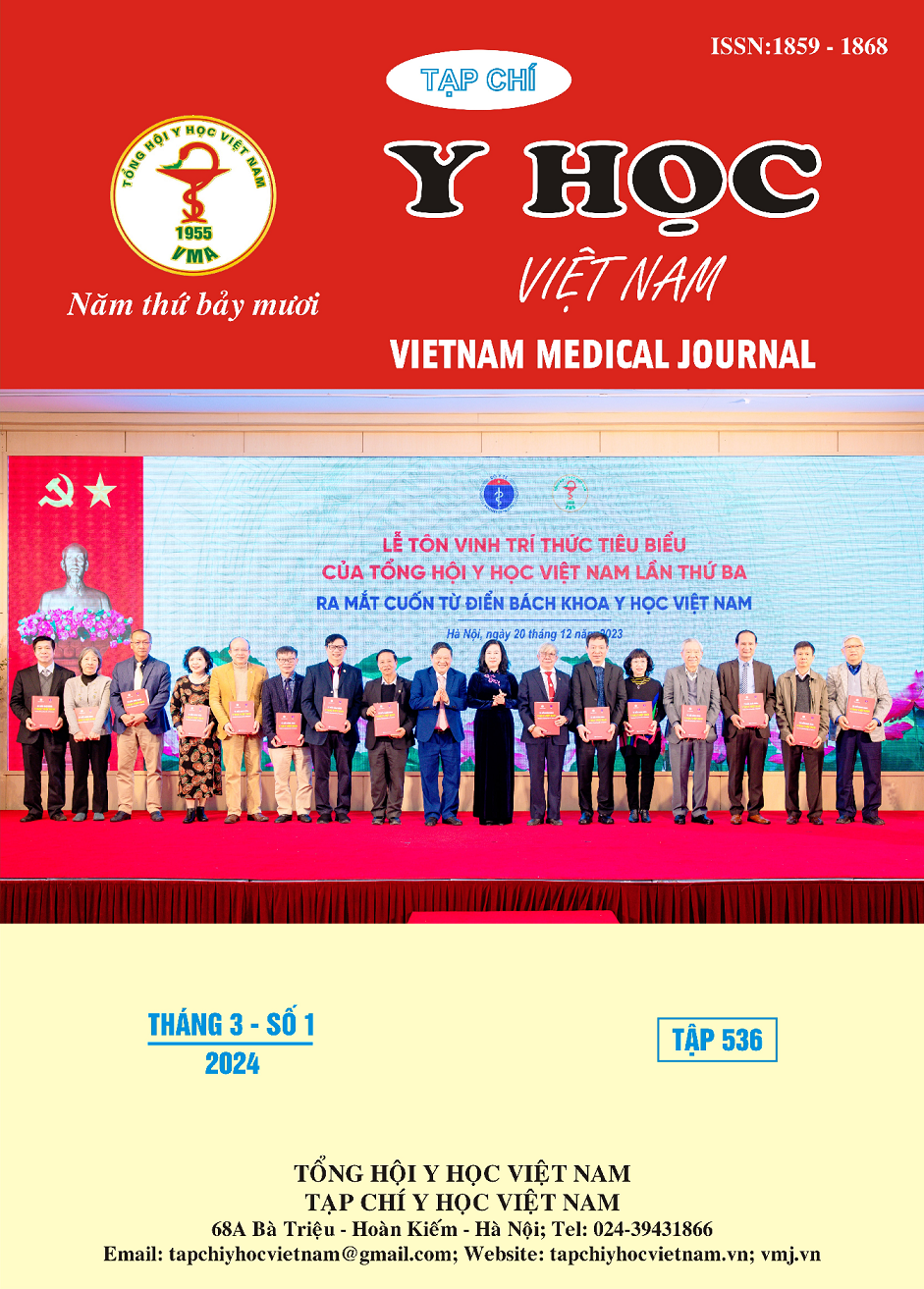DESCRIPTION OF THE CLINICAL CHARACTERISTICS OF PATIENTS WITH KNEE OSTEOARTHRITIS TREATED AT THE REHABILITATION OF E HOSPITAL IN 2022-2023
Main Article Content
Abstract
Target: Describe the clinical characteristics and status of patients with knee osteoarthritis. Subject and method of the research: 105 patients were diagnosed with knee osteoarthritis and treated in the rehabilitation department - E Hospital during July 2022 - July 2023. The patients were treated following the general protocol of the Ministry of Health for knee osteoarthritis, including drugs, physical therapy, exercise within 1 month. The patient assessment according to Womac scale was conducted at the time of admission, after 15 treatments and at discharge. Result: knee osteoarthritis often occurs in the group of over-60-years-old patients, with more women then men following the ratio of men/ women of 1: 6. Body mass index, occupation related to manual labor is one of the factors promoting knee osteoarthritis. The most common symptoms are: pain when walking, pain when climbing stairs 100%, mechanical pain 97,5%, pain when standing 89,3%, signs of joint leakage 75,6%. Most patients have moderate to severe range of motion limitation, accounting for 70,6%, thus greatly affecting daily activities. Conclusion: Chronic knee pain is a common symptom in knee OA patients, in which more women than men, the pro portion of manual labor patients is higher than that of non-manual labor patients. Chronic pain increases the risk of impaired ADLs. Nevertheless, there was no association with the quality of life of the study subjects. More in-depth research on chronic pain in the elderly with knee OA in particular and in the elderly in general is needed in order to have appropriate preventive and therapeutic measures to improve symptoms, thereby helping to improve the quality of life.
Article Details
References
2. Manal Hasan R.S (2010). Clinical features and pathogenetic mechanisms of osteoarthritis of the hip and knee. BC MEDICAL JOURNAL, 52 (NO. 8), 393-398.
3. Nguyễn Thị Thanh Phượng và Nguyễn Vĩnh Ngọc (2013). Nghiên cứu hình ảnh siêu âm sụn khớp ở bệnh nhân thoái hóa khớp gối. Tạp chí Nội khoa Việt nam, 10/2013, 206-213.
4. Nguyễn Văn Pho (2007). Đánh giá hiệu quả của tiêm chất nhầy sodiumHyaluronat (GO-ON) vào ổ khớp trong điều trị thoái hóa khớp gối. Luận văn tốt nghiệp bác sỹ chuyên khoa II- Đại học Y Hà Nội,
5. Nguyễn Thị Ái (2006). Nghiên cứu đặc điểm lâm sàng, cận lâm sàng và áp dụng các tiêu chuẩn chẩn đoán bệnh thoái hóa khớp gối. Luận văn tốt nghiệp thạc sỹ Y học, Trường Đại học Y Hà Nội
6. Manal Hasan R.S (2010 ). Clinical features and pathogenetic mechanisms of osteoarthritis of the hip and knee. BC MEDICAL JOURNAL, 52 (NO. 8), 393-398.
7. Adams J.G, T. McAlindon, M. Dimasi et al (1999). Contribution of meniscal extrusion and cartilage loss to joint space narrowing in osteoarthritis. Clin Radiol, 54 (8), 502-506.
8. Bollet A.J (2001). Edema of the bone marrow can cause pain in osteoarthritis and other diseases of bone and joints. Ann Intern Med, 134 (7), 591-593.


